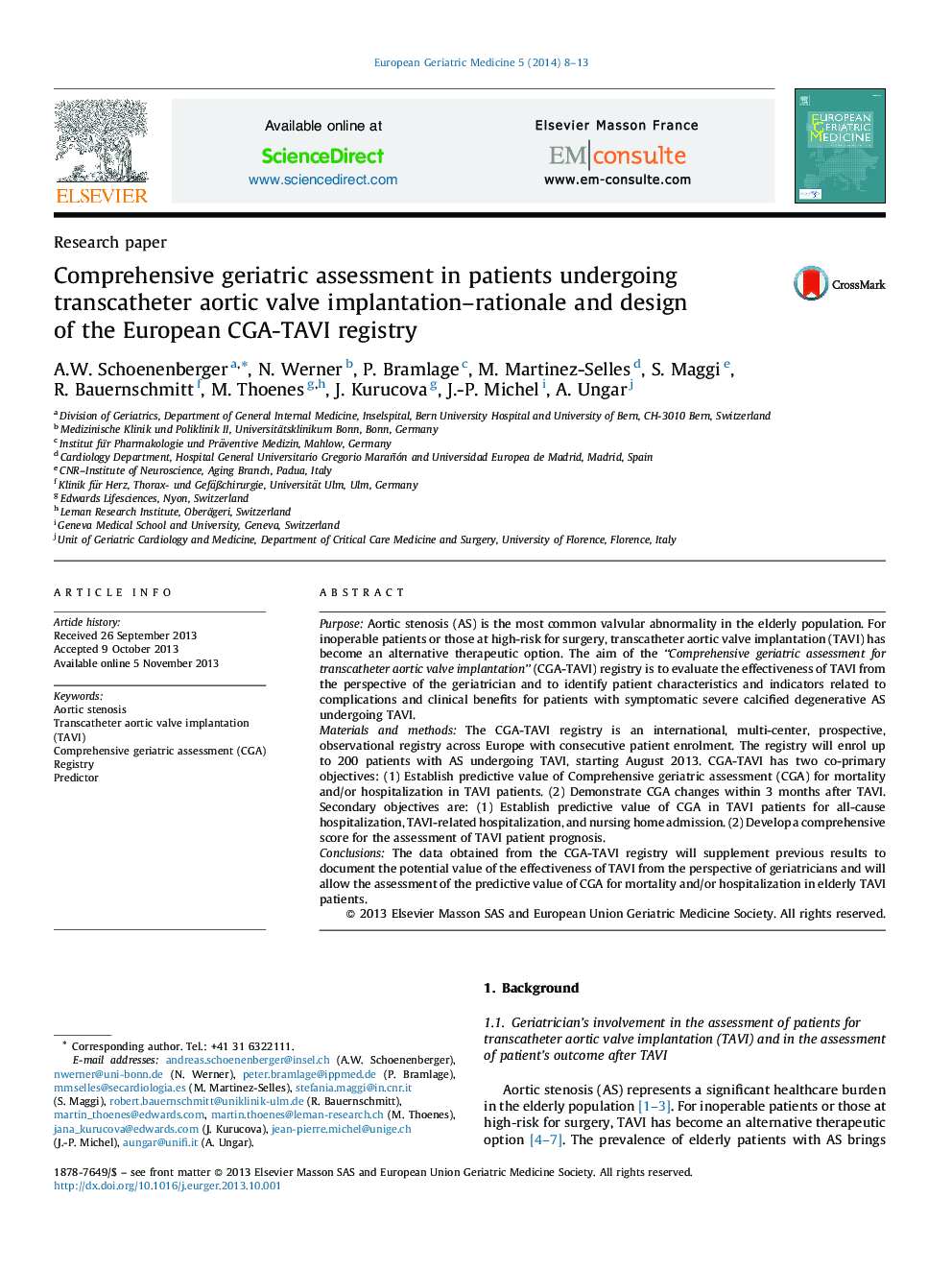| Article ID | Journal | Published Year | Pages | File Type |
|---|---|---|---|---|
| 3324226 | European Geriatric Medicine | 2014 | 6 Pages |
PurposeAortic stenosis (AS) is the most common valvular abnormality in the elderly population. For inoperable patients or those at high-risk for surgery, transcatheter aortic valve implantation (TAVI) has become an alternative therapeutic option. The aim of the “Comprehensive geriatric assessment for transcatheter aortic valve implantation” (CGA-TAVI) registry is to evaluate the effectiveness of TAVI from the perspective of the geriatrician and to identify patient characteristics and indicators related to complications and clinical benefits for patients with symptomatic severe calcified degenerative AS undergoing TAVI.Materials and methodsThe CGA-TAVI registry is an international, multi-center, prospective, observational registry across Europe with consecutive patient enrolment. The registry will enrol up to 200 patients with AS undergoing TAVI, starting August 2013. CGA-TAVI has two co-primary objectives: (1) Establish predictive value of Comprehensive geriatric assessment (CGA) for mortality and/or hospitalization in TAVI patients. (2) Demonstrate CGA changes within 3 months after TAVI. Secondary objectives are: (1) Establish predictive value of CGA in TAVI patients for all-cause hospitalization, TAVI-related hospitalization, and nursing home admission. (2) Develop a comprehensive score for the assessment of TAVI patient prognosis.ConclusionsThe data obtained from the CGA-TAVI registry will supplement previous results to document the potential value of the effectiveness of TAVI from the perspective of geriatricians and will allow the assessment of the predictive value of CGA for mortality and/or hospitalization in elderly TAVI patients.
